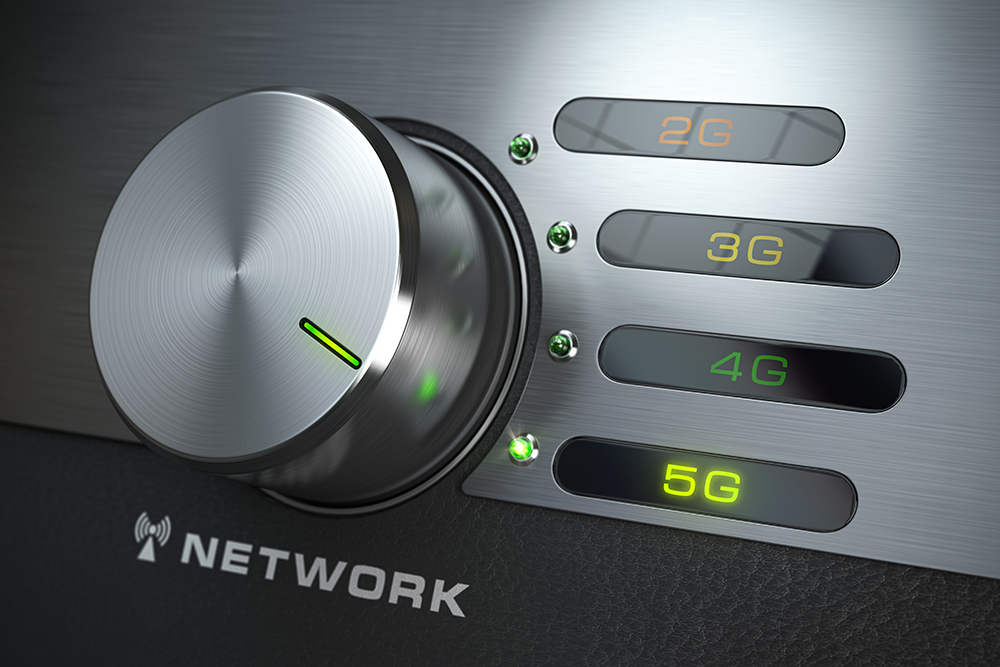The world has entered into an age where data, information systems and devices are all connected so intrinsically that hyperconnectivity is now proving to be the future.
Looking at the evolution of the fifth-generation wireless (5G) technology for example, it may be tantalising to stream and download files on a mobile device quicker, but that’s merely the tip of the iceberg when you realise what else 5G might be able to accomplish for you or your business.

5G is set to impact industries across the globe, including transport, healthcare, smart cities and autonomous vehicles
5G is set to impact industries across the globe, including transport, healthcare, smart cities and autonomous vehicles but in order for it to provide accelerated network speeds, it must be able to have low latency and high interconnection, which has been made possible through Edge Computing.
Notably, 5G technology is the latest iteration that will accelerate the transfer of data at speeds beyond one’s imagination and will come about when Edge Computing becomes a necessity rather than an option.
An introduction to the world of Edge Computing and 5G
What is Edge Computing and how it is interlinked with 5G in such a close manner that one may soon need the other to function optimally?
As we all know, 5G’s network speed should be 10 times faster than 4G, allowing for far-away sensors to give instant updates about connected devices. The increase in this real-time processing however, will require new equipment with enhanced capabilities.
This is where Edge Computing comes in because the data is processed at the borders of a network, as close to the data source as possible, rather than transferring the data significantly far away. For example, a lag in a self-driving car can be fatal, but Edge Computing doesn’t only improve safety, it also reduces accidents, curtails road congestion and enhances the overall efficiency of the vehicle while on the road.
The demand for Edge Computing will subsequently increase because it can offer the power needed to unleash innovation, agility and efficiency.
Working Together in Tandem
Despite one being online all the time and the other an almost closed data storage, both Edge Computing and 5G are interlinked in a manner that has the ability to drastically improve application performance.
5G will drive extra demand at a much faster pace, and as its development continues to evolve each day, the focus on latency will also continue to grow. Additionally, Edge Computing combines Artificial Intelligence (AI) and machine learning to intensify data management across networks.

Edge Computing combines Artificial Intelligence (AI) and machine learning to intensify data management across network
For example, performing remote telesurgery requires a much larger and faster pipe in conjunction with a shorter distance for data to travel, as time is of the essence and can cause fatalities with one simple delay.
The two can also work together by means of allowing operators to change their backhaul business models, especially for data-heavy applications like cybersecurity and meteorology.
Sending data back and forth to the cloud using 5G can be very expensive, instead Edge Computing allows for data to be filtered, before being analysed, rationalised and then stored.
This means operators can now offer a reduced backhaul for streaming to the edge rather than to a centralised cloud. With this technology, they can incentivise application or software developers to use Edge Computing sites, rather than on-premise sites.
Fitting Edge Computing into Enterprises
Combining both Edge Computing and 5G will have a positive impact on enterprises, simply because it will make it possible to install lower power but speedier computational power at the edge.

Combining both Edge Computing and 5G will have a positive impact on enterprises
Enterprises can make the most out of Edge Computing by leveraging these points below:
• Security and Privacy Protection
Edge Computing enhances security because it keeps data close to the edge and not in centralised serves. While it is still vulnerable to hackers, it holds very limited amounts of data, and often is not complete data sets, making it harder to succumb to hacking.
• Reliability and Resiliency
5G vastly increases network speed compared to 4G or 3G, while edge computing scales down latency by bringing compute capabilities closer to end-users, making them more accessible and reliable.
• Improved Speed and Reduced Latency
By design, Edge Computing removes the need for data to travel from endpoints to the cloud, and back and forth. Taking away that travel saves time, which is measured in seconds, or milliseconds, may not seem like much but travel time, also known as latency is critical in a vastly connected world where real-time decision-making capabilities are necessary.
• Scalability
Just like cloud computing, businesses can add Edge devices as it expands so they are only using what they deploy and manage. It’s also worth noting that Edge devices and endpoint hardware cost less than adding resources to a centralised data centre.
The Future is Edge Computing
Ultimately, the domination of Edge Computing when coupled with 5G is right around the corner. Edge Computing is set to reclaim the abilities that cloud computing has shouldered over the years. To put this in context, a mobile phone today has more computing power than the 1969 computer that sent astronauts to the moon. This proves a person is able to store data and capacity in computers while relying less on network connections and back and forth data transfers.
The world has already begun to open up to futuristically strong, sound advancements in technology and Edge Computing is here to continue pushing the boundaries forward while satisfying growing demands. It is time for business owners to start looking into Edge Computing and embraced this technology as the benefits are exponential.
About TM R&D
Established in 2001, TM R&D is the innovation arm for TM Group focusing on creating smarter ecosystems to make business and life easier for a better Malaysia. TM R&D’s solutions are clustered around four (4) pillars namely Intelligent Platforms, Data Brokerage, Connectivity/Tools and IR4.0/Digital Solutions. Growing from strength to strength since 2016, TM R&D has won multiple global awards and generated more than 2,800 Intellectual Property Rights (IPRs) and 1,400 digital assets to date. TM R&D’s innovations are all developed in-house and cut across multiple verticals such as Utilities, Retail, Agriculture, Healthcare and Education with safety and productivity as the top priority.
For more information about TM R&D and its innovations, visit www.tmrnd.com.my or email your inquiry to business@tmrnd.com.my or follow them on LinkedIn (TM Research & Development) for more news and updates.

